Cheat Sheet: Comparison of the Constitutions | Indian Polity for UPSC CSE PDF Download
Introduction
India’s Constitution is unique but shares features with other countries’ constitutions, like those of the USA, UK, Canada, and Australia. Comparing them helps understand how India’s system works and why it was designed this way. This chapter explains the key similarities and differences in simple language, focusing on government structure, rights, and other features.
Meaning of Constitutional Comparison
Comparing constitutions shows how countries organize their government, protect rights, and balance power. It highlights what India borrowed and what makes its Constitution special.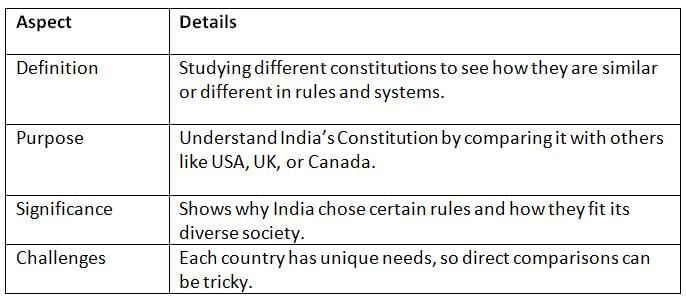
Key Points: Comparing constitutions helps see what India learned from others and how it created its own system.
Key Features Compared
India’s Constitution borrows ideas from other countries but adapts them to its needs. Below is a comparison of key features like government type, rights, and judiciary.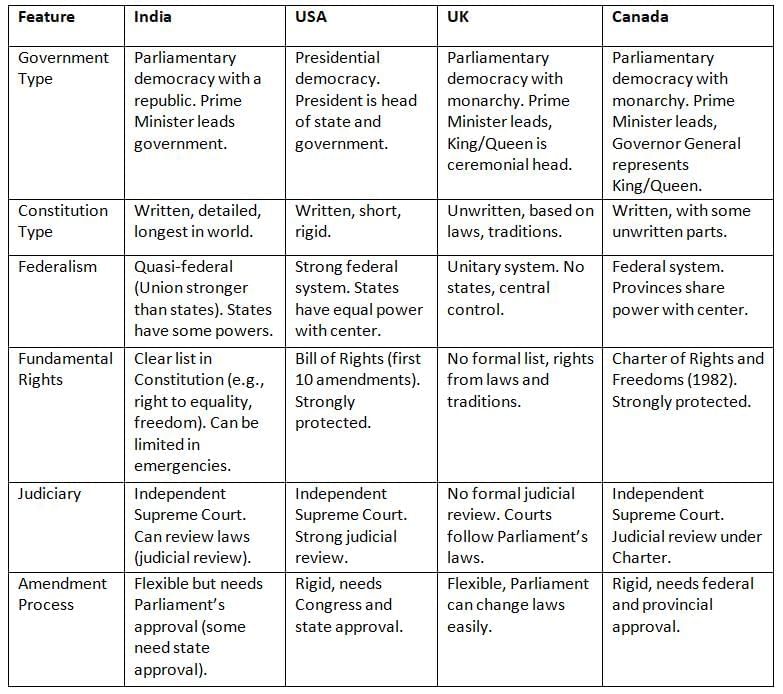
Key Points: India’s Constitution mixes parliamentary rule (like UK), federalism (like USA), and rights (like Canada), but adapts them for its diverse society.
Sources of India’s Constitution
India borrowed ideas from other constitutions to create a system that suits its needs, like unity in diversity and democracy.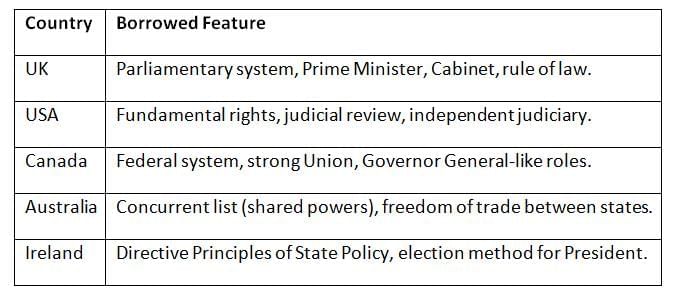
Key Points: India took the best ideas from other countries, like the UK’s government style and USA’s rights, to build its Constitution.
Unique Features of India’s Constitution
While India borrowed ideas, its Constitution has special features to suit its large, diverse population and history.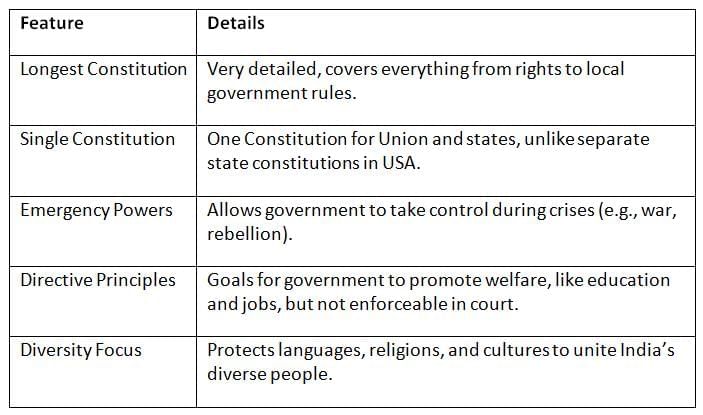
Key Points: India’s Constitution is unique for its length, unity, and focus on diversity and welfare, unlike other countries.
Challenges in Comparison
Comparing constitutions shows differences, but each country’s history and needs make direct comparisons complex.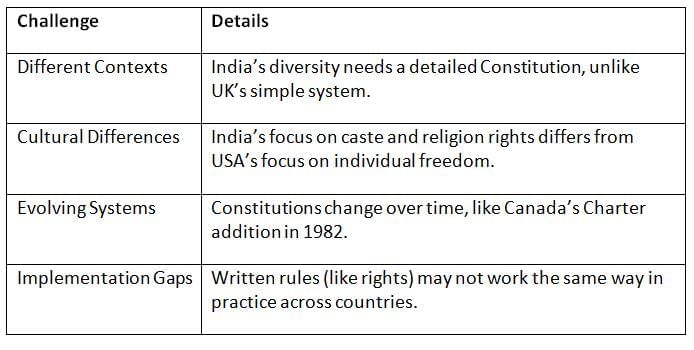
Key Points: Comparing constitutions is useful but tricky because each country has its own history and challenges.
Chronology of Key Constitutions
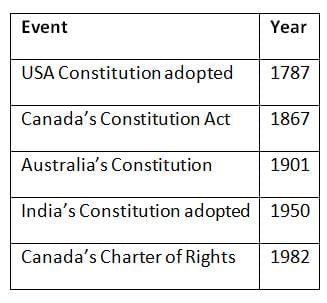
Conclusion
Comparing India’s Constitution with others, like the USA, UK, and Canada, shows how India borrowed ideas to create a democratic system for its diverse people. It mixes parliamentary rule, federalism, and rights while adding unique features like emergency powers and diversity protection. Understanding these comparisons helps see why India’s Constitution is special and how it keeps the country united and fair.
|
154 videos|994 docs|260 tests
|
FAQs on Cheat Sheet: Comparison of the Constitutions - Indian Polity for UPSC CSE
| 1. What is constitutional comparison and why is it important? |  |
| 2. What are the key features compared in constitutional comparison? |  |
| 3. What are some unique features of India’s Constitution? |  |
| 4. What are the main sources of India's Constitution? |  |
| 5. What challenges arise in constitutional comparison? |  |
















